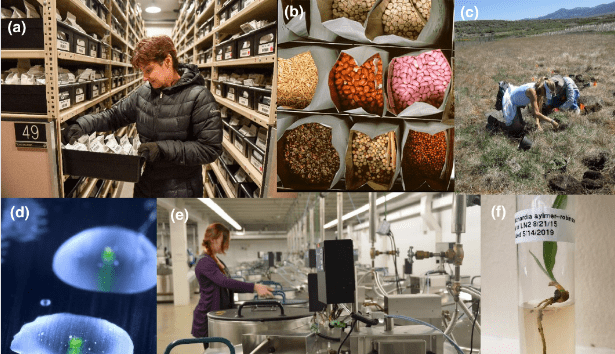Several governments are looking into implementing plans to support community seed banks. They are also looking into the challenges of registering and certifying improved landrace seeds.
In the United States, communities for medical use of some herbs support the awareness and promote some USA seed banks.
Other governments are developing plans to support community seed banks
Despite its many shortcomings, Bangladesh is one country where the community seed bank is a real thing and it’s not just about the freebies. Several other countries are making similar moves, such as India, Pakistan, and the Philippines. There are several reasons for this: a growing need for local food security; a tepid economy; and a need to keep the young ones out of the woods. The community seed bank is one of the most promising solutions to this dilemma. The aforementioned acronym entails more than 5,000 micro-businesses operating in about 40 districts, with some 40,000 farmers on board. These farmers are among the most resilient in the country, and have the opportunity to grow their own seeds in a variety of localized settings. These centers are a boon to a country where the number of farms per capita is a mere handful.
The other notable tidbit is that the community seed bank has garnered a fair amount of attention from the likes of the UN and the World Bank. This has spawned an active community seed banking association and some interesting collaborations.
Challenges in registering and certifying improved landrace seeds
Using non-conventional methods to store seeds is becoming an important aspect of landrace production. In fact, many of the seeds required to keep plants alive for hundreds of years require innovative storage methods.
Landraces are defined as crop varieties that are not a product of formal crop improvement programs. They are adapted to specific agroecosystem conditions and agronomic practices in local environments. They contribute to the development of plant breeding and have the capacity to resist biotic and abiotic stresses. They also help build the genetic base of modern cultivars.
In contrast to cultivars, landraces exhibit a significantly greater genetic diversity. They also possess adaptive complexes associated with pure-stand associations. This is a good thing, since the genetic diversity of plants is essential for plant breeding.
Among the challenges in registering and certifying improved landrace seeds for seed banks is determining which of the many collections should be selected. The method of selection varies from crop to crop.
A well-known example of a landrace is the Kent Wild White Clover. It was developed over a long period of time by farmers and is grown in hilly areas of Scotland.
Increasing the flow of diversity and information
Increasing the flow of diversity and information for seed banks is an important step to strengthen the capacity of farmers to adapt to climate change. In the face of environmental adversity, crop diversity serves as a buffer to climate uncertainty. Through the exploitation of local germplasm sources, more diverse and locally adapted varieties can be made available. The role of community seed banks in this regard has been investigated.
The global seed commons were established by a multilateral system of international seed treaties. These treaties recognize the collective responsibility of member nations to protect plant genetic diversity. They also support the preservation of associated knowledge. In addition, they allow for the use of orthodox seeds stored under conventional protocols.
The use of traditional seed systems and non-conventional methods for the storage of seeds has increased. The longevity of seeds stored with low moisture content is enhanced. This reduces the likelihood of storage pests.
Community seed banks are based on the principle of fostering seed exchanges. They provide access to diverse seeds and planting materials according to the needs of local farmers. They can also provide quick relief from environmental disasters.
Economic empowerment and financial sustainability
Using the concept of seed sovereignty, community seed banks are addressing the needs of smallholder farmers by providing them access to locally adapted germplasm, traditional varieties and seeds at low cost. They also provide technical support through research and extension services.
They can also be a viable management tool for agricultural biodiversity. Several countries have developed national policies focusing on community seed banks. These policies are supportive of their development.
National seed policies address variety registration, commercialisation, variety improvement and technical support to the seed sector. Some policies address intellectual property issues. These include laws that protect genetic resources and regulate access to seeds.
Some community seed banks have been established after a natural disaster or flood. Others have sprung up in response to drought. A number of NGOs have supported their development. A variety of actors have participated in these efforts, including USC-Asia, Deccan Development Society and the Gene Campaign.
Researchers have provided strong technical support to guide these efforts. Currently, community seed banks are producing large volumes of seeds. However, they have not yet been able to address financial sustainability and economic empowerment of their members.





























